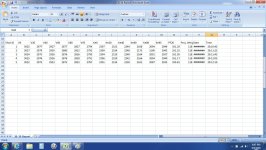In a 6 PPC benchrest rifle, custom action, Krieger barrel, tight neck, etc. what kind of extreme velocity spread would you expect to see using the same case for each shot? Powder charges weighed to .00 resolution on a gemtech scale, 68 grain bullets, speed in the 3360 fps range. I'm using a Lab Radar for the test.
Jim
Jim


